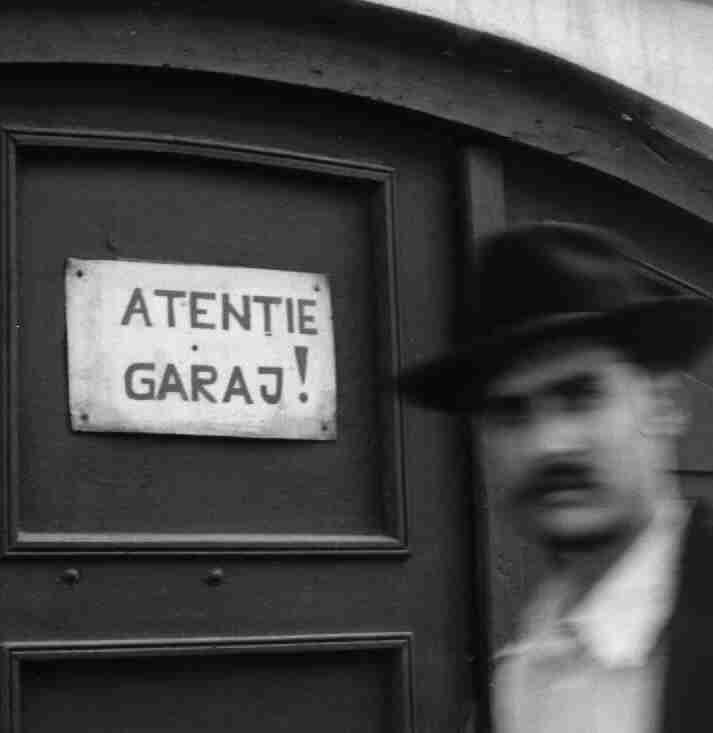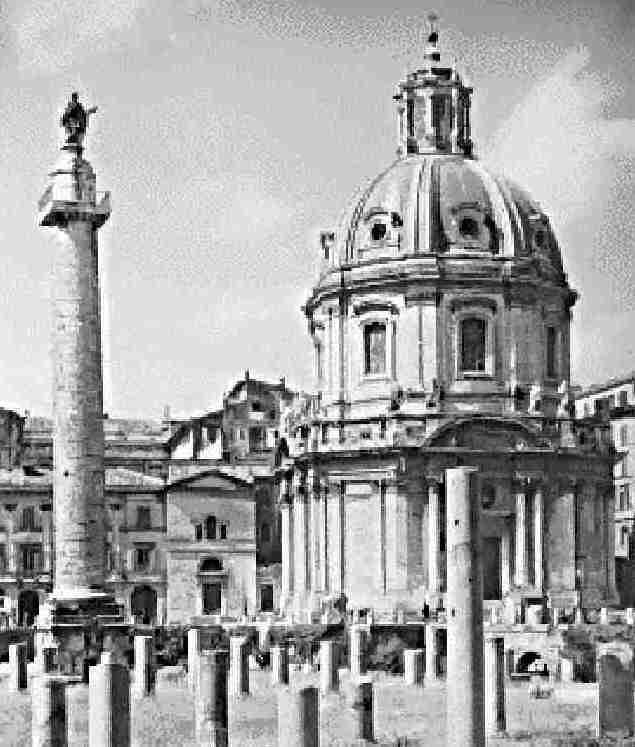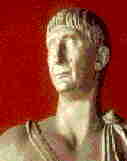
Rome and Roman heritage in Transylvania
by Luis Alberto Alonso Clavero (E)

Searching information, I found sometimes very different views of history depending on the source. Specially setting the origin of the Romanian people in the Dacians is subject of controversy comparing opinions of Hungarian and Romanian historians. Most of the books I found are translations of Romanian books into Spanish or French plus some other text in English. Fortunately I could find a few titles of different origin which helped me to show an independent point of view.
The Dacians
Dacia before the Roman conquest
Initially the Dacians were people coming from Thrace towards the North of the Balkans. The had active contacts with the Greeks though it doesn't explain the origin of their neo-latin language. Like the case of many European peoples, the origin of the Dacians is very obscure.
Their society was divided into two groups. The aristocracy, "cap wearers" or "fur hat people" as they are represented in the very realistic Trajan column, lived in mountain fortresses supplied with expensive Greek goods. Their subdits, "longhaired people" lived in the open country. In Trajan's column it can be observed that Dacian warriors used big oval shields, richly decorated and painted. Dacians believed in inmortality and venerated Zalmoxis in hills and mountains. The cult was very spiritual. There were not any temple or images. It is not clear if this Zalmoxis was a god or a person who really existed but he was mentioned by Plato in some occasions.
The first outstanding personality among the Dacians was king Burebista. He ruled for around forty years during the first half of the first century. At that time his realm extended to the east till the greek cities on the Black sea coast, to the west included part of Transdanubia, and to the South, as far as Macedonia and the Adriatic sea. A big area. They had the first confrotation with the Romans at the time of Julius Caesar. This fragile Dacian empire was dissolved very quickly after a conspiracy which ended with the murder of Burebista.
In the following years Rome was consolidating its conquests in the eastern flanks of the empire and an also in the north of the Balkan peninsula. They advanced towards the Danube which became the natural border of the empire once they took Pannonia and Moesia. In the meantime Sarmatian tribes came from the north east and finally settled in the plains between Transylvania and Pannonia, in the basin of river Tizsa. These Sarmatians sometimes collaborated with the Romans like in the construction of the "limes" though in other occasions attacked the borders of Pannonia.
Decebalus
The following main character in the History of the Dacians is king Decebalus, who ruled from 80 to 106 A.C. During his reign took place the main confrontation with the Romans which led, among many other reasons, to the conquest of Dacia and its incorporation to the empire as a province.
The first conflicts with Rome took place in the years 69 and 85 A.C. when Dacians crossed the Danube and entered in the new Roman province of Moesia. This provoked a series of operations against Dacia with a disastrous result. After the first one, even the governor of Moesia, Oppios Sabinos, was made prisoner. A third expedition, commanded by general Tettius Julianus defeated the Dacians in Tapae in 89 A.C. The peace agreement with emperor Domicianus forced Decebalus to pay annual tribute to Rome and to allow Roman armies passage through Dacian territories. In any case, assimilating the Roman civilization was the only possibilty of resistance. Already in the time of Augustus many Dacians spoke Latin. Anyway, a strong and rich Dacia was not convenient for the interests of Rome. So, once peace was consolidated in Pannonia, Trajan decided to attack Dacia in the year 101. The following year, after the Roman Victory in the Dacian capital, Sarmizegetusa (close to today's Orastie, southern Transylvania) Dacia became a dependant realm. Decebalus could keep the throne but in Sarmizegetusa was based a Roman garrison.
Not too long time after the defeat, Decebalus started to prepare his revenge rebuilding fortifications and setting alliances with other peoples. Sarmatian Roxolani for example were allies of the Dacians, supplying them with heavy cavalry. This time Romans attacked first in 105 entering in Transylvania with a two big armies. They took the capital and Decebalus, scaping to the mountains finally killed himself. Only his head was brought to Rome. The conquest of Dacia is represented, apart that in many Roman coins of that time, in two monuments. One is Trajan's column in Rome, erected in 113, and the other the Tropaeum Traiani, in Adamclisi (South-Eastern Romania)

When Trajan was proclaimed emperor by the senator he was a general of around forty years old, commanding an army in Germany. He said he would go to Rome as soon as he found some time. That was only two years later. He was born in Itálica (close to Sevilla), in a family of Roman civil servants. Trajan, apart from soldier was also administrator. He was tall, strong, brave and austere. Always consulted his decisions with the Senate, something that many emperors didn't do very often. He was a hardworking man and expected the same from the people around him. He believed more in a better administration than in big reforms. Propaganda presented him as the soldier-emperor, commanding the troops personally, specially after the victories in the Danube and the East.
After the second and definite defeat of Decebalus, with the gold coming from Transylavinian gold mines, Trajan financed four consecutive months of games in the Circus with 10.000 gladiators, tax exemptions for many debtors, and a programme of civil engineering construction. Only in Rome an aqueduct, a new port in Ostia and four big roads, a theatre in Verona and the Trajan forum. That gives an idea of the huge spoil brought from Transylvania.
Dacia, the Roman province
This province was established in the year 107 A.C. It was product of Trajan's new safety policy based in the creation of provinces were there wasn't an ally prince before. It was also a political and economical success. Within the borders of Dacia was included the lower Tizsa region, all the eastern part of the Carpathian basin, that is Transylvania, to an interior defense line along the western side of the Carpathians. The southern border was the Danube and the neighbouring province of Moesia. The communication across the Danube was done by a stone bridge in Drobeta, built by the Greek Apolodoros, also author of the Trajan forum. This bridge substituted the former pontoon bridge. The administrative center of Dacia was Ulpia Traiana Sarmizegetusa, located near the old capital. Conquering Dacia, Rome was going further than its former natural border, the Danube.
To the new province came colonists from all corners of the empire. A quick and intense romanization was the only way to ensure a reliable defense against barbarians. So new cites and roads were built to hold the newcomers. A few examples of the completely new cities or built in the place of Dacian fortresses are: Napoca (Cluj-Napoca), Apulum (Alba Iulia) and Cibiuma (Sibiu). Dacia was also protected by huge garrison, the biggest contingent of provincial troops after Britannia. It was something necessary in a border province specially after the wars against the Marcomanni and Quadi all along the Danube provinces in the time of Marcus Aurelios. So, Dacians were romanized quickly, but at least in the countryside they kept their costums and monoteism that later would open more easily the doors to Christianism.
During the existance of Dacia province, along the northern borders of Dacia, the Goth pressure was becoming stronger. Goths, Carpians, and free Dacians attacked constantly. Finally the situation was too hard to hold and emperor Aurelian decided to evacuate Dacia in 271-272 as well as the Rhine-Danube angle. Romans kept Dacia for approximately 250 years, till it was abandoned in hands of the Goths. Goths stayed for a century till were forced to leave to the west by the Huns. The Goth period in Transylvania was a period of destruction. They had a much simpler life than in the Roman Dacia and didn't use Roman buildings letting them fall into decay. With the Huns invasion, the last remains of the urban civilization were destroyed.
But, who stayed and who left, after the evacuation? Left the soldiers, rich people, traders, but many of the rural population probably stayed. The new invaders, the Goths, were nomads and not very numerous, so had to live on local people tributes.
The Romanization
According with the Daco-Roman Continuity theory, romanization was very intense and quick, and the actual Romanians are direct descendants of the romanized Dacians who stayed there even after the withdrawal of Rome. Previous to the Roman conquest there were contacts with the Roman culture since the first century, when Romans where already in the right bank of the Danube. In fact, between the 4 and 64 A.C. 150.000 people emigrated from Dacia to Moesia after the wars, where they were given land to cultivate. In Moesia, they adopted the language of the many soldiers living there, that is, Latin. The agrarian structure was based in great properties like in Italy. And the urban aristocracy were Italians and descendants of veterans. In Dacia there was an important contingent of soldiers too, and also the emigration was quite strong specially from the neighbouring provinces like Pannonia, Dalmatia and Thracia as well as a good number of civil servants from Italy. At the same time, the Roman social structure was imposing mainly in the cities while in the countryside the local Dacian population was in larger numbers.
So, following the Daco-Roman Continuity theory, it is supposed that a good part of the Dacians didn't offer too much resistance to the Trajan campaigns against Decebalus. One more argument is the Latin background of today's Romanian language. On the other hand, it cost many battles dominating the whole Transylvania, where orography favored the defenders. The Roman rule was never as secure as it was for instance in Pannonia, where Romans stayed two and half times longer than in Dacia. Possibly there were for a long time some resistance nuclei along the Carpathians. Dacian upraisings usually coincided with external attacks. With the withdrawal of the Romans many inhabitants moved to the south and south west.
To find another origin for the latiny of Romanian people we have to go a few centuries later, to the first third of this millennium. At that time the population of Transylvania consisted in: Hungarians, Székelys of Hun origin who spoke Hungarian, Saxons (German speaking people original from the Luxemburg area) and what we could call proto-Romanians. Following Byzantine sources, they called Wallachians all the latinizing, non-Greek people living in the central Balkans. Their first documented approach to the external slopes of the Carphatians took place during a Byzantine campaign involving Transylvania in 1166 and one more of the ispán Szebe in 1120 using Wallachian troops, which determine the presence of Romanians in Transylvania. Romanization was much stronger in the mountain areas where they lived as transients (shepherds) than in the Transylvanian Dacia. Of course during this time they also mixed with the descendants of the early Dacians. All that above is the alternative proposed by István Lázár to the Daco-Roman Continuity theory.
Bibliography
- Transylvania. A Short History. István Lázár.
- Los rumanos. Breviario histórico. Mircea Elidae.
- Storia di Roma. Indro Montanelli.
- El oriente romano. Maurice Sartre.
- La guerra y la paz bajo Trajano y Adriano. María Pilar González-Conde.
- Transylvania in the History of the Romanians. Cornelia Bodea and Virgil Cândea.
- Encyclopedia Encarta 97. Microsoft.
- Rome's Enemies: Germanics and Dacians. Peter Wilcox.
- L'Epoque de Trajan. Eugen Cizek.
last update: 11 JUL 2002 by Ralph